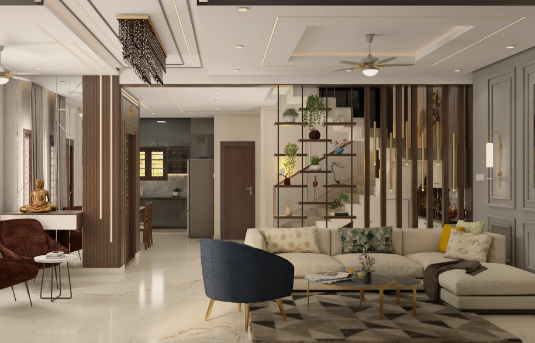Balancing Function and Aesthetics: How Small Hardware Choices Transform a Home

When one thinks of home improvement there are often thoughts of larger projects-remodeling a kitchen, opening up a floor plan, or replacing old flooring material. Yet the majority of thoughtful changes to the design of a space happen with much less volition and likelihood of renovation; the change could be as simple as selecting one small detail of design versus another, which creates an impact on the daily feel and function of that space. In this case, architectural hardware holds great weight even though this change may seem small. Architectural hardware like cabinet pulls, door handles, and hinges have shaped the way residents interact with their space daily, contributing to comfort, accessibility, and in some cases safety as well.
The Power of Hardware
Hardware pieces may be physically small yet hold significant visual weight. Every door, every built-in, and every storage system will require at a minimum one piece of hardware that each user will touch several times per day! Designers compare hardware in design to jewelry in fashion- it isn’t the focus, but it ties the aesthetic altogether. It can be a great distraction for a well designed space if the hardware is mismatched or the finish is out of date- it will remove the user from the moment they are experiencing in that space.
But aesthetics aren’t enough; function is equally valued. An attractive newly renovated space becomes frustrating if cabinet doors are difficult to grasp or interior passage doors don’t latch properly. Hardware can deeply impact how a home as a whole performs when utilized on a daily basis.
Material Choices and Their Impact
Contemporary hardware is now produced in an array of diverse materials, each with advantages particular to various areas of the home.
Solid brass is a very valued material because it is so durable and corrosion resistant, making it ideal for entrances and high moisture areas like bathrooms.
Stainless steel is effective for modern interiors and particularly where a clean, minimal aesthetic is desired.
Zinc alloys offer a lower-cost option for decorative hardware, without limiting design options.
The finishes used on your selected material-matte black, brushed nickel, antique bronze, polished chrome-it has just as much influence. A significant trend in design is to steer away from shiny and towards warm, smooth finishes. People are asking for homes to be comfortable and grounded, rather than super clean.
Ergonomics and Everyday Comfort
Because hardware interacts with people frequently it matters: functionality is going to be even more important as we see multi-generational homes grow. For example, lever style door handles are easier to maneuver than round knobs-a significant detail for children, seniors, or anyone with limited hand strength. Soft-close cabinet hinges are quieter and reduce slamming, creating a gentler environment.
Attention to ergonomics also supports long-term accessibility. Many homeowners now choose universal design principles even when they do not have immediate accessibility needs, knowing that thoughtful hardware selections help a home age gracefully along with its occupants.
Matching Hardware Across a Home
While perfect uniformity is unnecessary, consistency helps maintain visual harmony. Designers often recommend choosing one primary finish for the home and allowing small exceptions where appropriate. For example, brushed nickel might unify the majority of interior doors, while a statement finish—such as matte black—could be used on entry hardware to create a strong first impression.
Color temperature is another consideration. Warm finishes such as brass or bronze complement wood-tones and earthy palettes, while cooler finishes like chrome sit naturally with modern or monochromatic schemes. Consistency in tone prevents the space from feeling visually fragmented.
Integrating Hardware With Broader Design Goals
Hardware choices should reinforce rather than compete with existing architectural elements. In minimalist interiors, simple geometric profiles tend to work best. Homes with vintage character may benefit from more ornate details or traditional silhouettes. Transitional spaces—those blending classic and modern influences—often look best with hardware that has clean lines but a warm, textured finish.
For homeowners planning renovations in stages, hardware updates offer a cost-effective way to refresh multiple rooms without structural changes. Replacing outdated hinges and door handles can modernize a hallway or entryway in an afternoon, making it a practical first step in a longer remodeling plan.
Installation Considerations
Successful hardware upgrades depend on thoughtful component selection, as well as the actual installation. Misaligned latches, stripped screws, and incorrect backset measurements will likely lead to disappointing results. Measuring twice, using the appropriate tools, and checking alignment during installation will help avoid many common problems.
Hardware installation is usually an easy task for those who are comfortable with doing it themselves. However, entry doors or heavy-duty locksets may require professional assistance to ensure security and proper fit.
A Small Detail With Lasting Impact
Hardware may not dominate conversations about home design, but it definitely matters. A home that feels cohesive, functions well, and is comfortable has much of its success influenced by the deliberate selection of individual components that will be used countless times each day. By considering the finer details, especially with regard to materials, ergonomics, and finish consistency, homeowners can have a significant impact on their homes without the cost of major renovations.
Small, straightforward hardware upgrades—such as new door handles—can create a better, more impactful space more than most would realize. For the homeowner intending to update a home, it is worth their time thinking about how these small things contribute to their experience of living in a well-designed space.





